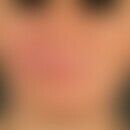Synonym(s)
Acquired Anonychia; Anonychia reactive; nail loss; Nail loss
DefinitionThis section has been translated automatically.
Anonychia refers to a complete reversible or irreversible nail loss occurring on one, several or all fingers or toes. Acquired (non-genetic) nail loss is usually acquired as a result of serious (dermatological) disease or trauma (see below: Anoynchiea) of one or more nails on fingers and/or toes. Anonychia is observed in the following diseases and events:
- After previous chemotherapy (to be avoided by cooling the extremities during chemotherapy)
- after local, single or recurrent trauma
- after TEN, erythema exsudativum multiforme (see also onycholysis)
- after taking phototoxic medication
- Epidermolysis bullosa hereditaria dystrophica
- for extensive tinea unguium
- Eczema
- Psoriasis vulgaris (especially with acrodermatitis continua suppurativa)
- Lichen planus(atrophying form of the Lichen planus)
- Syphilis
- Erythroderma of different etiologies
- Severe infections (e.g. hand-foot-mouth disease)
LiteratureThis section has been translated automatically.
- Babu S et al (2012) Anonychia due to prenatal phenytoin exposure. J Assoc Physicians India 60:64
- Lam C et al (2013) Images in clinical medicine. Epidermolysis bullosa acquisita. N Engl J Med 368:e17
Incoming links (1)
Reactive arthritis;Outgoing links (14)
Acrodermatitis continua suppurativa; Anonychia (overview); Cytostatics (overview); Eczema (overview); Epidermolysis bullosa dystrophica recessive, severe generalized; Erythema multiforme, minus-type; Erythrodermia; Hand-foot-mouth disease; Lichen planus atrophicans; Onycholysis (overview); ... Show allDisclaimer
Please ask your physician for a reliable diagnosis. This website is only meant as a reference.




